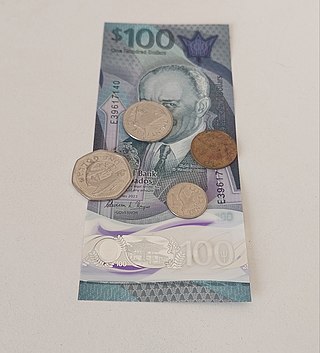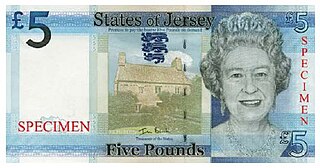First Irish pound
British rule
Commercial bank issues 1783–1921 |
| ↓ |
Irish Free State & Northern Ireland
Commercial bank issues 1921–27 |
| ↙ | ↓ | |
Northern Ireland issues
(part of the U.K.)
Commercial bank issues 1929+ | Irish government banknote issues
Currency Commission 1927–42 |
| ↓ | ↘ |
Legal Tender Notes
A Series 1928–42 | Consolidated Banknotes
commercial bank issues
1929–41 |
| ↓ | ↙ |
| Central Bank of Ireland 1943–2001 |
Legal Tender Notes
A Series 1943–77
B Series 1976–93
C Series 1992–2001 | |
| Source: https://www.irishpapermoney.com/history-of-irish-papermoney-issues.html |
Currency notes first appeared in Ireland the late 1600s [1] when merchants began to issue paper notes for purchases which they promised to redeem at a later stage. These notes began to change hands prior to redemption, becoming the first paper to circulate as currency notes in Ireland. Some of these merchants went on to become bankers and issued paper currency in the form of banknotes and post bills as a service. These became the Irish private banks which issued the banknotes in use throughout Ireland for over 100 years. The most famous of these is the House of La Touche.
Irish private banks issued a wide variety of denominations in guineas, pence, shillings, and pounds. Their notes tended to correspond to coin denominations, and are known to range up to £100. Many banks issued only small notes, those with a face value below £5.
Private banks were small partnerships, and were limited to 6 partners or less by an act of 1756. Some of the private banks were very successful and their banknotes were reliable instruments. However, because of their nature as small organisations, many of the private banks failed, with their banknotes becoming worth a fraction of their face value. The weakness of the paper currency in Ireland lead to pressure for the creation of a ‘National Bank’ to provide a stable currency. Eventually, the Bank of Ireland was created to fill this need.
The Bank of Ireland was the first joint stock bank to produce notes intended for use throughout Ireland; its first issue was in 1783. [2] Early notes were denominated either in Irish pounds or guineas, with 1 guinea equal to 1 pound 2 shillings 9 pence Irish.
The suspension of cash payments by the Bank Restriction Act 1797 lead to an increase in the usage of banknotes in Ireland, and the notes of many of the private banks became payable in Bank of Ireland notes, which was stated on each banknote often worded as ‘National Bank Paper’. [3] The Bank of Ireland also began to issue small notes pound and guinea denominations in place of gold.
The highest denomination banknote that has been recorded for an Irish bank is a £500 note issued by the Bank of Ireland dated in 1869. [4]
Pound sterling
In 1826, the Irish pound was replaced by the pound sterling and later Irish banknotes were issued denominated in sterling. Banks issuing notes during this period were the Bank of Ireland, the Belfast Banking Company, the National Bank, the Northern Banking Company, the Provincial Bank of Ireland and the Ulster Bank.
From 1824 banking regulation in Ireland was changed to allow for the formation of joint stock banks with branch networks. This resulted in the foundation of several large joint stock banks which started to issue banknotes in Ireland. The notes of these banks quickly replaced those of the Irish private banks in circulation. [5]
By 1836, six banks were issuing notes in Ireland. The following denominations are known for each bank up to 1844: Agricultural and Commercial Bank of Ireland (Founded 1834): £1, 35 Shillings, £3, £5, £10. Bank of Ireland (Founded 1783): 30 Shillings, £1, £3, £5, £10, £20, £50, £100, £200, £500. Others likely Belfast Banking Company (Founded 1827): 25 Shillings. Others likely. National Bank of Ireland (Founded 1835): 30 Shillings, £1, £3, £5, £10, £20, £50, £100. Northern Banking Company (Founded 1824): £1, 25 Shillings, 30 Shillings. Others likely. Provincial Bank of Ireland (Founded 1825): £1, 25 Shillings, 30 Shillings, £2, £3, £4, £5, £10, £20, £50, £100. Ulster Banking Company (Founded 1836): £1, 25 Shillings, 30 Shillings, 35 Shillings, £3, £5, £10, £20, £50, £100.
In addition, the Bank of Ireland issued notes denominated in One Guinea and One Guinea and a Half up until around 1819, as evidenced by images of surviving examples, the latest known of which is dated 4 Jan 1819. [6] An early proof One Guinea note is known for Northern Banking Company, ca1824.
The Agricultural and Commercial Bank of Ireland failed in 1840. [7] After 1845 fractional denominations were prohibited, and the denominations issued by the banks settled on the following up to 1920: Bank of Ireland: £1, £3, £5, £10, £20, £50, £100, £500. Belfast Banking Company: : £1, £5, £10, £20, £50, £100. National Bank of Ireland: £1, £3, £5, £10, £20, £50, £100. Northern Banking Company: £1, £5, £10, £20, £50, £100. Provincial Bank of Ireland: £1, £3, £5, £10, £20, £50, £100. Ulster Banking Company: £1, £5, £10, £20, £50, £100.












